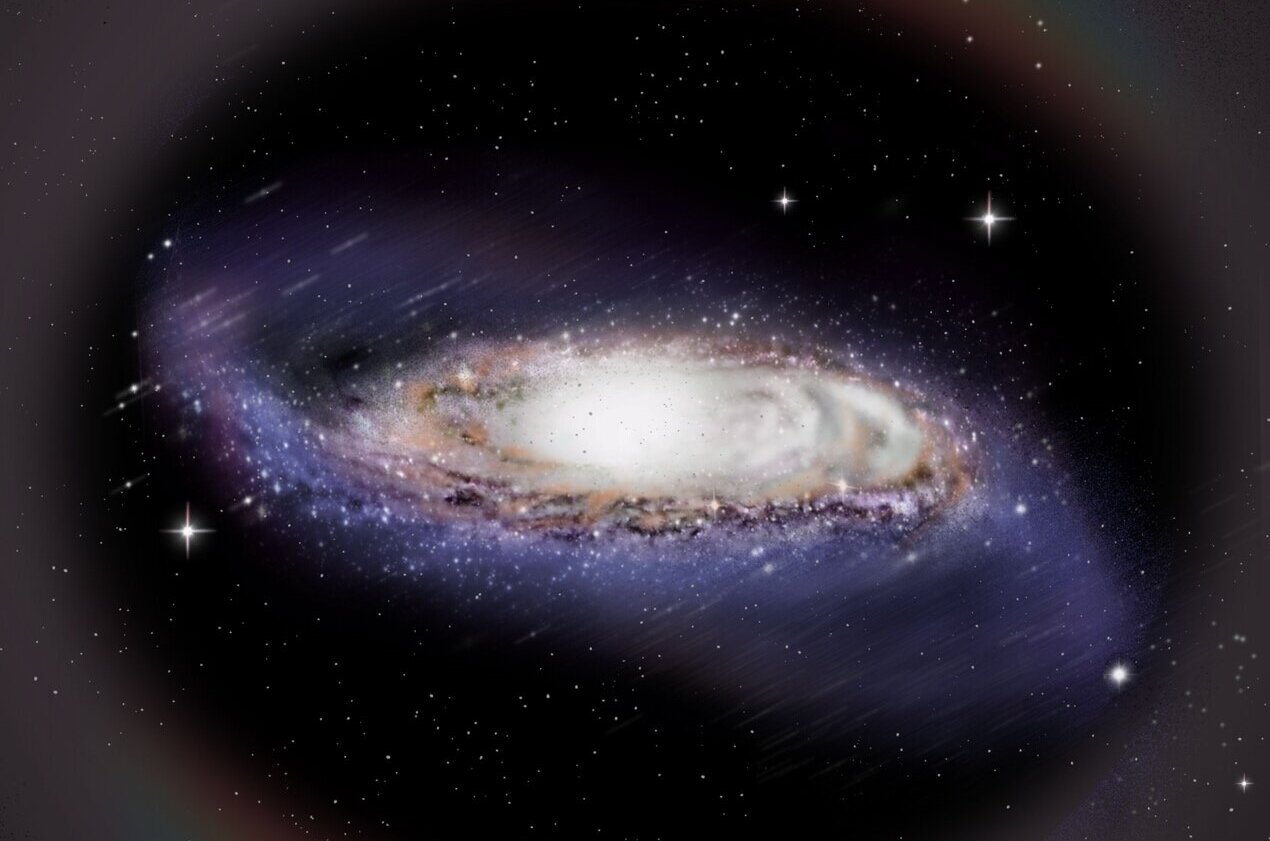The stellar stream Icarus is a giant ribbon of luminaries that rotate in the Milky Way disk much faster than others. Scientists say it may be the remnants of a dwarf galaxy that was swallowed up by our galaxy some time ago.

Stellar flow in the disk of our Galaxy
Astronomers from Italy and Chile have studied an accretionary stellar stream called Icarus in the disk of the Milky Way. The results of the study, detailed in a scientific paper published on October 16 on the arXiv preprint server, provide important information about the nature of this stellar stream.
Icarus is a rapidly rotating stellar stream in the galactic disk discovered in 2020. This stream is thought to be the result of accretion of debris from a dwarf galaxy progenitor with a stellar mass of about a billion solar masses in an initial progressive low-inclination orbit. However, some studies suggest that Icarus may be a sign of the formation and evolution of the Milky Way disk, rather than a remnant of a collapsed dwarf galaxy.
Detailed stream study
To confirm the origin of Icarus and learn more about its properties, a team of astronomers led by Paola Re Fiorentin of the Turin Observatory in Italy analyzed data from the Gaia satellite, the Apache Point Observatory Galactic Evolution Experiment (APOGEE) and the Galactic Archaeology from HERMES project.
The team identified 81 Icarus objects. Having examined them all, the scientists were able to perform chemical analysis and obtain the dynamical properties of this stellar stream. It turns out that Icarus has a local rest standard velocity of 171 km/s, and its metallicity is about -1.35 dex.
Based on the color-magnitude diagram of Icarus objects, astronomers have determined that the stellar stream is at least 12 billion years old. The nominal age of Icarus is estimated at about 14 billion years.
In general, chemical analysis has shown that Icarus stars are generally alpha-enriched with an average alpha element to iron ratio (red giant branch stars only) of about 0.27. Moreover, Icarus stars were found to have low nickel-to-iron ratios when compared to stars in the Milky Way.
Origin of the stellar stream Icarus
Overall, the researchers concluded that the properties of Icarus are typical of low-mass accretionary systems, and that the results additionally support the collapsed galaxy remnant scenario for this stellar stream. But more detailed studies are needed to confirm this.
“Yet, at this point, we cannot exclude the possibility of a primordial disk origin. Accurate stellar ages, improved astrometry (from Gaia’s next releases), increased spectra (from, e.g., APOGEE, GALAH, WEAVE, 4MOST surveys), and dedicated spectroscopic follow-up whenever necessary, will confirm new members, thus strengthening the ex situ origin of Icarus as the first prograde satellite galaxy in the disk of the Milky Way,” the scientists wrote.
Provided by phys.org


